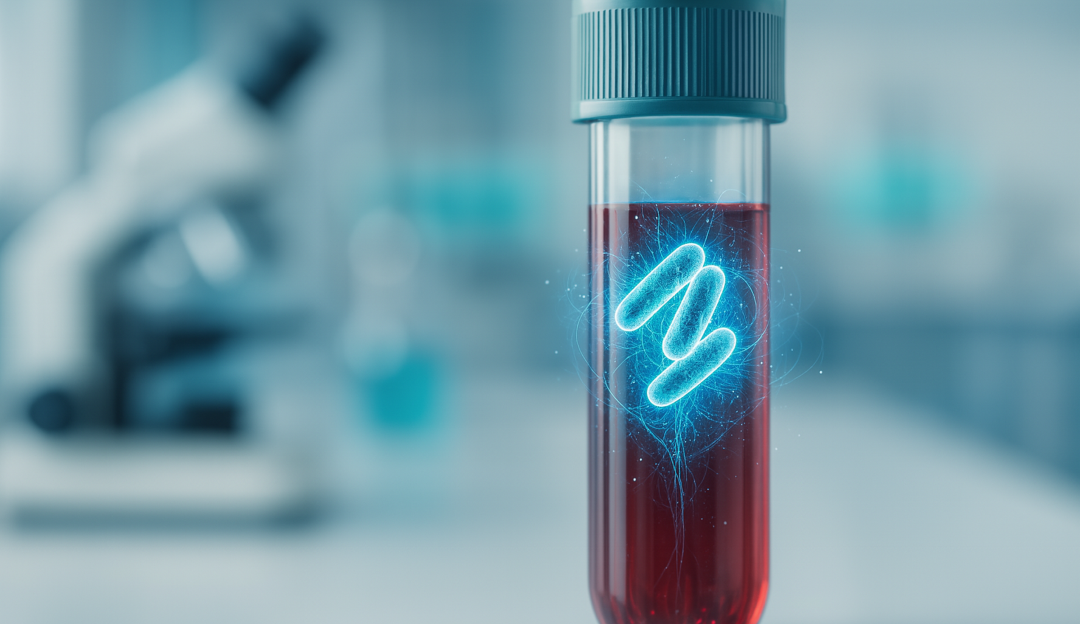Alzheimer’s diagnosis is supported by measuring a combination of biomarkers. CSF biomarker diagnostic techniques focus on identifying Alzheimer’s pathologies like amyloid β (Aβ) plaques and tau tangles. These protein abnormalities disrupt normal brain function and are considered hallmark indicators of the disease. Both types of damage result in small amounts of abnormal protein leaking into the blood stream. Of the two, Aβ plaques appear earlier – sometimes decades before clinical symptoms are noticed – making them of great interest for early diagnosis using blood biomarker assays. However, biomarkers in blood/plasma are generally present at much lower concentrations compared to CSF and therefore require higher sensitivity techniques.
Test sensitivity
A specific area of focus for Alzheimer’s blood tests is the ratio of Aβ42/40 peptide fragments. But since the difference in Aβ42/40 concentration between individuals who have Alzheimer’s and those who don’t is small, diagnostic accuracy is a concern. Assay design is crucial here. Performance can be enhanced with high-accuracy fluidic handling steps and expert implementation of optical detection techniques such as chemiluminescence, microwell arrays, and multiplex fluorescence. These measures improve test sensitivity, ensuring that very small amounts of target proteins can be detected consistently and reproducibly.
Recent developments in this space include Fujirebio’s Lumipulse test for the assessment of Aβ accumulation in Alzheimer’s patients and Quanterix’s Simoa phospo-Tau 217 blood test. The former was submitted to the US Food and Drug Administration (FDA) in September 2024, and the latter was granted Breakthrough Device Designation by the FDA in March 2024.
Sample stability
A further challenge associated with Aβ42/40 quantitative assays is sample stability. Blood sample collection and pre-analytical handling require careful management to avoid impacting biomarker concentrations. Other factors – such as fasting or exercising before the sample is taken – can impact Aβ42/40 concentrations too. It may be necessary to advise patients to avoid certain activities before the blood draw to avoid false positives or false negatives. Also, true fasting status might be determined by including HBA1C and glucose in test data then flagging samples of concern. Such an approach would be similar to the measurement of haemolysis, icterus, and lipemia (HIL) in blood samples to minimise misreporting.
Reagent specificity and consistency
The reagent antibodies used to detect proteins in chemiluminescent or electrochemiluminescent immunoassays must achieve high standards of specificity, sensitivity, and stability. Finding antibodies that are sensitive enough to detect tiny amounts of the target protein but specific enough to ignore everything else can be a challenge. Batch to batch variability compounds the issue and must be addressed to improve the performance of blood biomarker assays for Alzheimer’s diagnosis.
Using multiplex assays and combinations of antibodies can overcome some of the limitations linked to specificity. Consistency on the other hand requires batch to batch calibration and reliable reference materials.
To improve specificity a wide selection of biomarkers are being investigated. These include Neurofilament Light (NFL), neurogranin, BACE1, synaptotagmin, SNAP-25, GAP-43, synaptophysin, sTREM2, YKL-40, and D-serine. With an array of potential biomarkers that may show complex relationships across disease types and progression, researchers are investing machine learning to classify patients. These are currently in their infancy, but we expect them to become more common and be combined with other parameters such as sex, age, education, and imaging data over the coming years.
Assay standardisation
For Alzheimer’s blood tests to be used in primary care environments, they must be standardised with diagnostic techniques used in other settings. Results should be consistent, irrespective of which method is used, and where or when it is performed. This demands the development and validation of cutoffs – in other words, threshold values used to classify a result as positive or negative – that translate across different methods. At present, certified reference materials for blood biomarkers are still in development and test methods are not commutable. So, cutoffs need to be based on clinical studies with the specific assay technology and validated on the target patient population.








